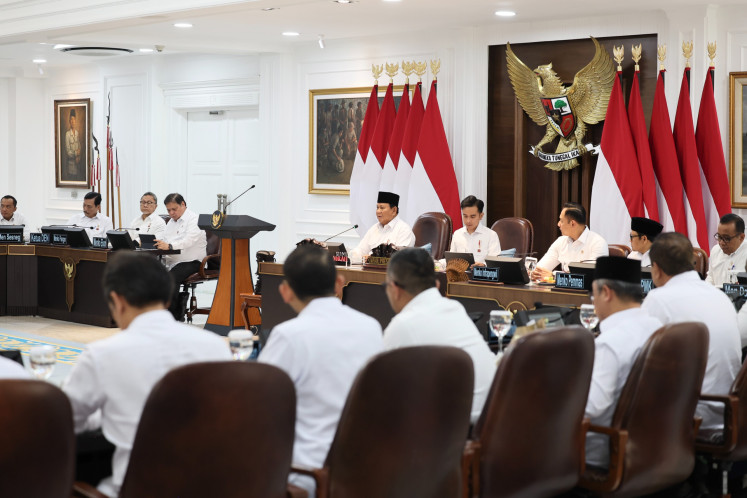Popular Reads
Top Results
Can't find what you're looking for?
View all search resultsPopular Reads
Top Results
Can't find what you're looking for?
View all search resultsLand reform won’t impede carbon emission reduction effort: Govt
The government has ensured President Joko “Jokowi” Widodo’s flagship land-reform program that aims to release millions of hectares from forest areas will not derail the ongoing effort to reduce carbon emissions by maximizing contributions from the forestry sector
Change text size
Gift Premium Articles
to Anyone
T
he government has ensured President Joko “Jokowi” Widodo’s flagship land-reform program that aims to release millions of hectares from forest areas will not derail the ongoing effort to reduce carbon emissions by maximizing contributions from the forestry sector.
Environment and Forestry Minister Siti Nurbaya said on Thursday that the government would “merely focus on releasing unproductive land” in forest areas under the land-reform policy.
Siti’s ministry, which is spearheading the land-release initiative, estimated that 4.85 million-ha inside forest areas across Indonesia could be released to support the program, 2.1 million-ha of which was located in unproductive conversion forests (HPK).
Senior adviser to Siti, Wahyudi Wardoyo, added that the ministry’s Directorate General for Planology and Environment Management had mapped out the land inside forest areas that could be released without disrupting the ambitious effort to slash carbon emissions.
“With the technology of mapping owned by the directorate general, we could measure land with low carbon stock [that could be released for the land reform scheme],” Wahyudi told The Jakarta Post on the sidelines of a ministry event on carbon emissions at the Grand Sahid Jaya hotel in South Jakarta on Thursday.
The forestry and land-use sector are expected to contribute the most to the effort to lower carbon emissions, with the country pledging to reduce its greenhouse gas output by 29 percent by 2030, as part of a global effort to limit the increase in global temperatures to 2 degrees celsius.
In its Nationally Determined Contribution (NDC) document, Indonesia has placed the burden on the two sectors to contribute 17 percent to the 29 percent target.
The government believes it can be achieved through four initiatives: reducing the deforestation rate to no more than 450,000-ha per year, increasing wood production in industrial forests, restoring 90 percent of the targeted 2 million-ha of peatland until 2030 and rehabilitating 90 percent of the targeted 800,000-ha of land per year.
In addition to the forestry and land-use sector, the other sectors expected to contribute to the effort to reduce carbon emissions are the energy sector, which is expected to contribute 11 percent; waste sector (0.38 percent), agriculture (0.32 percent) and industry (0.1 percent).
In Thursday’s event, stakeholders in the five sectors gathered to present the details of various action plans needed to follow up on the country’s NDC document, as well as previous and ongoing initiatives that are in line with the country’s climate change adaptation and mitigation efforts.
Officials from the ministry also used the event to present several programs they had either laid out or carried out to support the NDC implementation, specifically in the forestry sector.
Putra Parthama, the ministry’s director general for sustainable production forest, said the ministry was preparing a draft regulation that obliged timber product permit (IUPHHK) holders to implement a logging method that could reduce greenhouse gas emissions.
Muhammad Firman, the ministry’s director for land and water conservation, meanwhile, boasted the achievement of planting on 1.3 million-ha in 2016. “That figure is higher than the target of rehabilitation in the NDC,” he said.
However, Rizaldi Boer, a climate change expert who serves as the executive director of the Bogor Agricultural Institute (IPB)’s Center for Climate Risk and Opportunity Management in Southeast Asia and Pacific (CCROM-SEAP), who was also present at the event, said Firman’s claim could not be used as a gauge to measure the contribution of the rehabilitation program to the NDC implementation, saying the most important figure was the survival rate of the plants.










